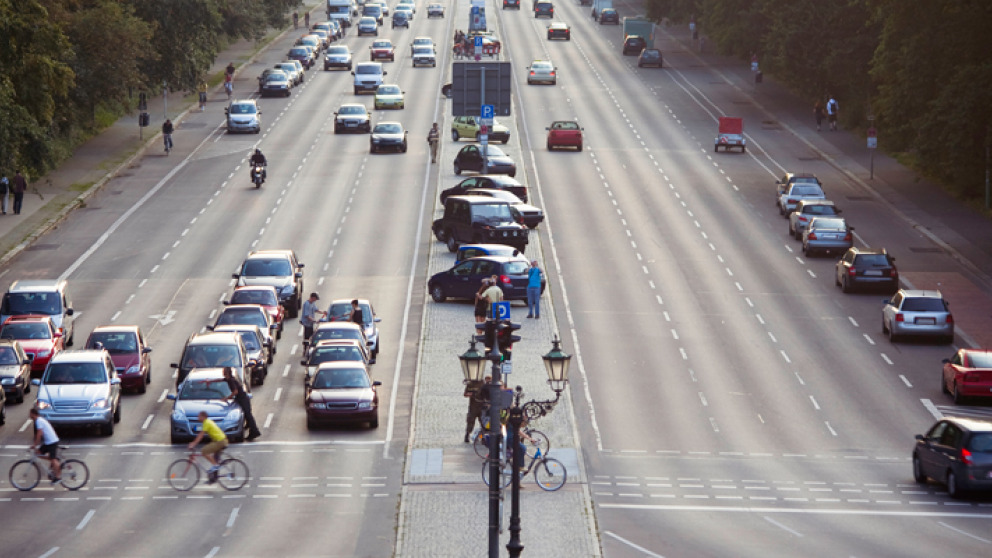EGUPolicy: An Expert Discussion on Ozone – Working at the Science-Policy Interface
07.12.2015

This post was originally written for the EGUPolicy column, a monthly feature of the European Geophysical Union’s official blog, GeoLog. The original post appeared here on December 2, 2015.
As scientists and researchers we are increasingly being asked to conduct or participate in interdisciplinary (working across disciplines) or transdisciplinary (working with stakeholders outside of academia) research. Science-policy work is one aspect of this. However, it is often hard to know how, who, where, or when to engage. To hopefully shed a bit of light on this topic I will take you through the process for a recent science-policy activity we collaborated on, topically focused on ozone air pollution. An activity like this can easily be part of a larger context or series of actions integrated into a research project, or it could also be a one-off event.
As a bit of context, I work at the Institute for Advanced Sustainability Studies (IASS) in Potsdam, Germany. This institute is set up as a combination research institute-think tank hybrid with a focus on transformational and transdisciplinary research. Topically the research program that I work in has a focus on air quality in the larger context of global change. Through previous participation in local science-policy events, we developed a relationship with a German NGO (Deutsche Umwelthilfe) that also has as one area of focus, air quality. (As a side note: working with Deutsche Umwelthilfe, or any NGO, does not mean doing advocacy work, but is rather focused on providing solid, up-to-date science information.)
With the revisions to European air quality-relevant emission directives planned, we discussed organizing a ‘Fachgespräch’ (expert discussion) on ozone. This was a natural fit given that much of our research focus is on ozone, and it is still a critical air quality issue for Europe. More than 98% of the population in European urban areas was exposed to concentrations of ozone exceeding the WHO guideline values in 2012.[1] Our interest was to communicate some of our latest work on ozone and to raise awareness of the relevance of ozone as an environmental and air quality issue that is still important in Europe and globally. Their interest was to be able to inform revisions of air quality legislation, as well as being able to provide a solid scientific basis for justification to reduce ozone precursor species.
Together we designed the Fachgespräch. Considering the questions: What do we want to get out of it? What would make the activity a success? What aspects should be included to reach these goals? Who is our target audience? In this case we were aiming for a robust discussion including perspectives from science and policy. To lay the groundwork for the rest of the discussion, it was important that we cover the state of the science regarding ozone. This can inform how proposed mitigation might be supported by the science and/or identify areas where more research might be needed. We also included experts not only from atmospheric chemistry, but from health and ecosystem impacts. Understanding the state of the knowledge on the human health effects and ecosystem impacts of ozone is important in addressing the current air quality guidelines and standards. Are the guidelines and standards sufficient to protect our health and ecosystems? Experts from local to national policy (in this case local government representatives and the German Environment Agency) were also key participants, to address what has been implemented in terms of policy. Where have previous reductions in ozone precursor emissions (substances which react in the atmosphere to produce ozone) been made, and where is there significant potential for progress? A mix of participants from different science, policy, and societal organizations made for a robust and interesting discussion.
As part of this Fachgespräch we had planned to write a policy brief that could be distributed to a wider audience that built on the information presented and any conclusions that came out of the event. This was a collaborative publication, and without going into the content, you can read it here. This briefing was used by the NGO in their discussions with EU ministers to aid their considerations for revisions to air quality-relevant emission directives. Furthermore, after publishing the policy brief, it became clear that this document appealed to a wider audience than previously identified as we received requests for copies from members of academia who found it useful as support for research funding/facilities on ozone. Events and discussions such as these are often useful to inform research by identifying areas particularly relevant to informing policy, or where interdisciplinary collaboration or additional disciplinary efforts could add significant value to advance the science.
Hopefully this post has shed some light on science-policy work, and maybe even given you a few ideas for discussion of your own. There are a lot of different options out there, but it is important to identify what fits to your work and goals. Attending such events in your field and geographical area to cultivate relationships that may lead to future collaborations is a great way to start.
[1] EEA. Air Quality in Europe – 2014 Report. p.54.
Header image: istock/naphtalina
